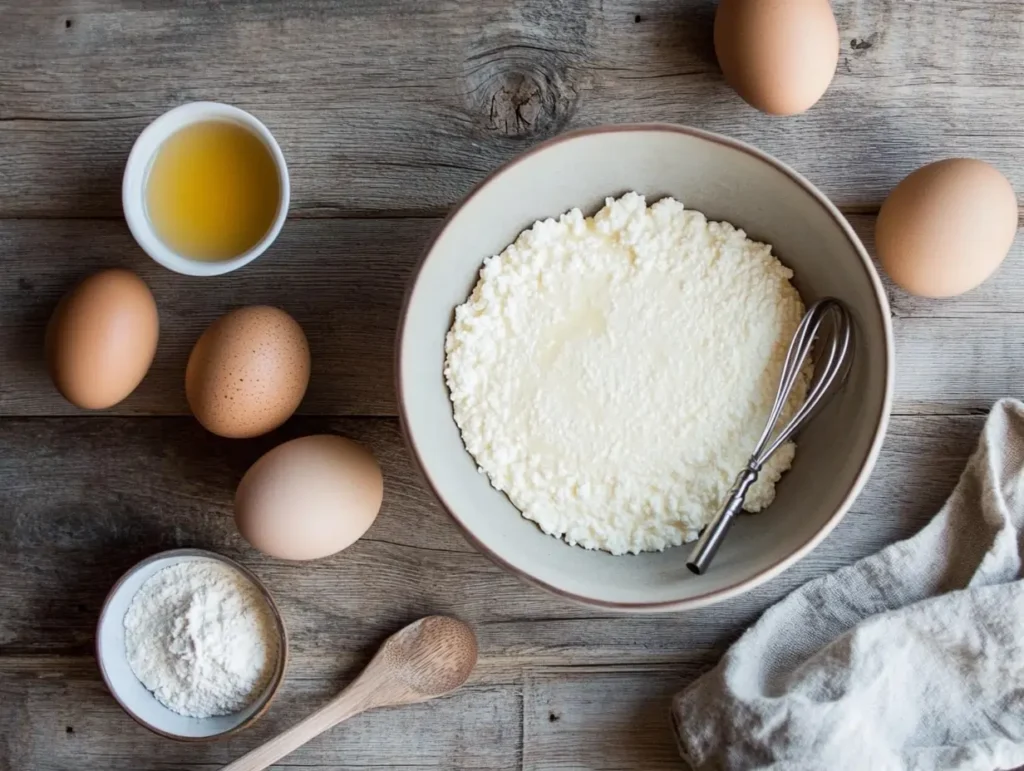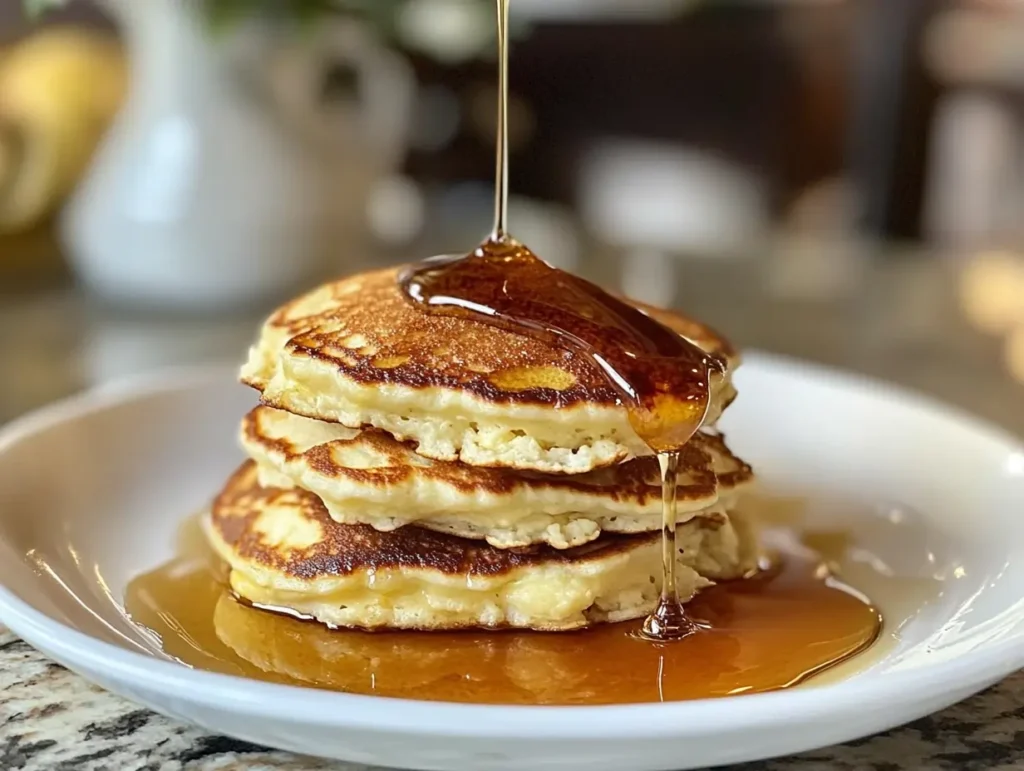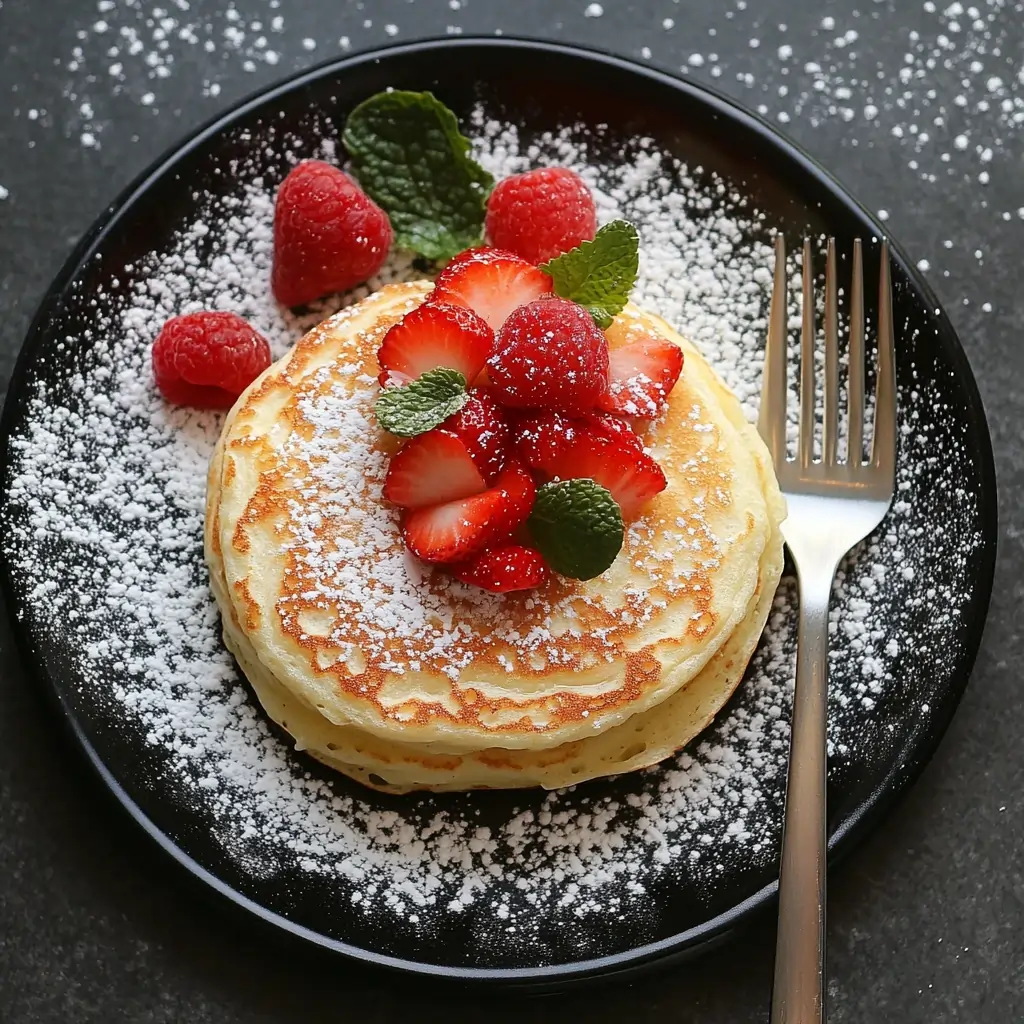Cottage cheese pancakes might not be as well-known as their classic buttermilk counterparts, but these protein-packed, creamy delights are gaining popularity for good reason. Not only are they delicious and fluffy, but they are also incredibly nutritious and a perfect breakfast option for those looking to start their day with a healthy boost of energy. Cottage cheese pancakes bring a new level of texture and flavor to the pancake game, thanks to the subtle tang and richness of the cottage cheese.
In this article, we’ll dive deep into how to make perfect cottage cheese pancakes. You’ll find valuable insights, practical tips, and real-life examples to ensure your pancakes come out light, fluffy, and perfectly balanced. Whether you’re a pancake enthusiast or a newbie, this guide will help you master the art of cottage cheese pancakes.
Table of Contents
What Are Cottage Cheese Pancakes?
Cottage cheese pancakes are a high-protein variation of traditional pancakes, incorporating cottage cheese into the batter to create a thicker, more textured, and slightly tangy pancake. The result is a hearty and nutritious breakfast that’s lower in carbohydrates and higher in protein than standard pancakes. Cottage cheese pancakes are beloved by health-conscious eaters for their balance of macronutrients—making them perfect for athletes, fitness enthusiasts, or anyone looking to switch up their morning routine.
Why Cottage Cheese?
Cottage cheese is rich in protein and low in fat, making it a great addition to pancakes. It adds a unique creaminess and helps create a fluffy texture without the need for extra fat. Plus, cottage cheese is packed with calcium, vitamins, and minerals, making these pancakes not only tasty but also a healthier option compared to regular pancakes.
Ingredients for Cottage Cheese Pancakes
To make perfect cottage cheese pancakes, you’ll need a few staple ingredients. Let’s break down each of them and why they’re important for this recipe.
Essential Ingredients:
- 1 cup cottage cheese (preferably full-fat)
- 3 large eggs
- 1/2 cup all-purpose flour (or a gluten-free flour blend)
- 1/4 cup milk (or almond milk for a dairy-free option)
- 1 tablespoon honey (or sugar alternative like maple syrup)
- 1/2 teaspoon baking powder
- 1/4 teaspoon vanilla extract
- Butter or oil for cooking
Ingredient Insights:
- Cottage Cheese: Full-fat cottage cheese yields the best texture and flavor, but you can use low-fat or even non-fat versions if you prefer. The cheese provides moisture, flavor, and a bit of a tang.
- Eggs: These provide structure and help bind the batter together.
- Flour: All-purpose flour works well, but you can experiment with alternatives like almond or coconut flour for a lower-carb option.
- Milk: This helps thin the batter and ensures a smooth consistency.
- Honey: Adds a touch of sweetness without overpowering the tangy flavor of the cottage cheese.
- Baking Powder: A leavening agent that helps create those fluffy, airy pancakes.
- Vanilla Extract: A little vanilla adds warmth and balance to the tanginess of the cottage cheese.

Step-by-Step Instructions for Making Cottage Cheese Pancakes
Making cottage cheese pancakes is simple, but there are a few key steps to ensure the texture and flavor are just right. Follow these step-by-step instructions for pancake perfection.
Step 1: Prepare the Batter
In a large mixing bowl, combine the cottage cheese, eggs, milk, and vanilla extract. Whisk until smooth. Cottage cheese has a slightly lumpy texture, so you’ll notice that the batter will retain some of that texture, which is okay. If you prefer a smoother consistency, you can blend the cottage cheese before adding it to the batter.
Step 2: Mix the Dry Ingredients
In a separate bowl, whisk together the flour, baking powder, and a pinch of salt. This helps to evenly distribute the leavening agent, ensuring that the pancakes will rise evenly.
Step 3: Combine the Wet and Dry Ingredients
Slowly add the dry ingredients to the wet mixture, stirring gently with a spatula. Be careful not to over-mix, as this can make the pancakes tough. The goal is to just combine everything until no large streaks of flour remain.
Step 4: Heat the Pan
Preheat a non-stick skillet or griddle over medium heat. Add a small amount of butter or oil to the pan and let it melt. You want just enough to coat the bottom of the pan lightly—too much and the pancakes will fry rather than cook.
Step 5: Cook the Pancakes
Use a 1/4 cup measuring cup to pour the batter into the hot pan. The batter will be thicker than regular pancake batter, which is what you want for these hearty pancakes. Cook each pancake for about 2-3 minutes on each side, or until bubbles form on the surface and the edges are set.
Pro Tip: Cottage cheese pancakes tend to brown more quickly than traditional pancakes due to the higher protein content, so keep a close eye on them to prevent burning.
Step 6: Serve and Enjoy
Once the pancakes are golden brown and cooked through, transfer them to a plate. Serve them warm with your favorite toppings like fresh fruit, maple syrup, or a dollop of Greek yogurt for an extra protein boost.
Common Mistakes to Avoid When Making Cottage Cheese Pancakes
Even though this recipe is straightforward, there are a few common pitfalls that can affect the outcome of your cottage cheese pancakes. Here’s how to avoid them.
1. Not Adjusting the Thickness of the Batter
Cottage cheese pancake batter is naturally thicker due to the presence of cottage cheese. If you find that the batter is too thick, you can thin it out slightly by adding a little more milk. On the other hand, if the batter is too thin, adding a tablespoon of flour at a time can help.
Tip: Aim for a batter that’s thick enough to hold its shape but not so stiff that it doesn’t spread in the pan.
2. Over-mixing the Batter
Over-mixing can lead to tough pancakes because it activates the gluten in the flour. Once you combine the wet and dry ingredients, stir just until the ingredients are incorporated.
Tip: If you see a few lumps in the batter, don’t worry—this is perfectly normal.
3. Cooking at Too High a Heat
Because cottage cheese has more moisture than typical pancake ingredients, it’s important to cook them at medium heat. High heat can lead to pancakes that are burnt on the outside and undercooked on the inside.
Tip: Stick to medium heat and be patient. These pancakes take a little longer to cook than regular pancakes.
Pro Tips for Making Perfect Cottage Cheese Pancakes
Want to take your pancakes to the next level? Here are some expert tips that will help you get the most out of this recipe.
1. Use Full-Fat Cottage Cheese for Maximum Flavor
While you can certainly use low-fat or fat-free cottage cheese, full-fat versions provide the best texture and flavor. The fat in the cottage cheese contributes to a creamier batter and richer pancake.
2. Blend the Cottage Cheese for a Smoother Pancake
If you’re not a fan of the lumpy texture of cottage cheese, consider blending the cottage cheese in a food processor or blender before adding it to the batter. This creates a smooth pancake batter that some people prefer.
3. Add Lemon Zest for a Fresh Twist
For an extra burst of flavor, try adding the zest of a lemon to the batter. Lemon and cottage cheese pair beautifully, and the citrus zest will brighten up the flavor of the pancakes.
4. Make Them Gluten-Free
If you’re following a gluten-free diet, you can easily substitute the all-purpose flour with a gluten-free flour blend. Almond flour and oat flour also work well, though you may need to adjust the amount slightly depending on the consistency.

Topping Ideas for Cottage Cheese Pancakes
Cottage cheese pancakes are incredibly versatile, and their slightly tangy flavor pairs well with both sweet and savory toppings. Here are some ideas to get you inspired:
Sweet Toppings:
- Maple Syrup: The classic pancake topping. The sweetness of the syrup complements the tangy cottage cheese perfectly.
- Fresh Berries: Strawberries, blueberries, and raspberries add a burst of freshness and color.
- Greek Yogurt: For an extra protein punch, add a spoonful of Greek yogurt on top.
- Honey & Almonds: A drizzle of honey with slivered almonds creates a sophisticated and nutritious topping.
- Peanut Butter & Banana: For a filling, energy-packed option, top your pancakes with peanut butter and sliced bananas.
Savory Toppings:
- Smoked Salmon & Dill: Cottage cheese’s mild tanginess pairs beautifully with savory smoked salmon and a sprinkle of fresh dill.
- Avocado & Poached Egg: Transform your pancakes into a savory brunch dish by adding creamy avocado and a poached egg on top.
- Sautéed Spinach & Feta: For a Mediterranean twist, top your pancakes with sautéed spinach, crumbled feta, and a drizzle of olive oil.
Cottage Cheese Pancakes vs. Regular Pancakes: A Nutritional Comparison
If you’re trying to eat healthier, cottage cheese pancakes offer a significant nutritional advantage over traditional pancakes.
1. Higher Protein Content
Cottage cheese is naturally rich in protein, with one cup containing around 24 grams of protein. This makes cottage cheese pancakes a great option for those looking to increase their protein intake.
2. Fewer Carbs
Traditional pancakes are often high in refined carbs, but cottage cheese pancakes contain fewer carbohydrates, especially if you substitute all-purpose flour with almond or coconut flour.
3. More Satisfying
Thanks to the combination of protein and fat in the cottage cheese, these pancakes are more satisfying and keep you fuller for longer compared to regular pancakes, which are often high in sugar and low in nutrients.
Conclusion: Time to Add Cottage Cheese Pancakes to Your Breakfast Rotation
Cottage cheese pancakes are the perfect fusion of indulgence and nutrition. Whether you’re looking for a high-protein breakfast option, a post-workout meal, or simply something new to add to your morning routine, these pancakes tick all the boxes. Their creamy, slightly tangy flavor and fluffy texture make them a crowd-pleaser, and they offer a lot of flexibility in terms of toppings and variations.
So why not give cottage cheese pancakes a try? Not only are they delicious, but they’re also an excellent way to sneak more protein and nutrients into your day. Whether you’re making them for a lazy Sunday breakfast or meal prepping for the week ahead, cottage cheese pancakes are sure to become a staple in your kitchen.

Call to Action:
Feeling inspired to whip up some cottage cheese pancakes? We’d love to see how you make them your own! Share your creations on social media with the hashtag #CottageCheesePancakes and let us know what toppings you chose. Happy flipping!

